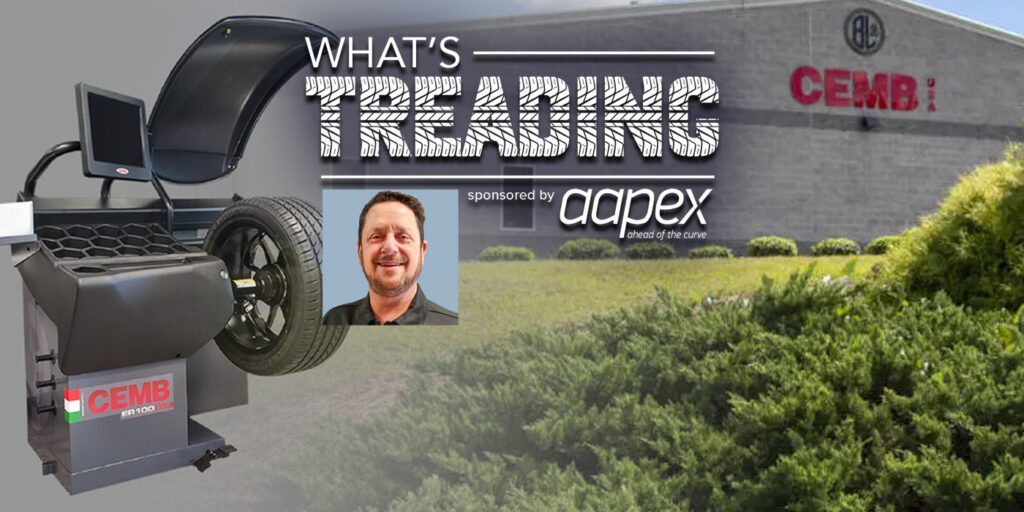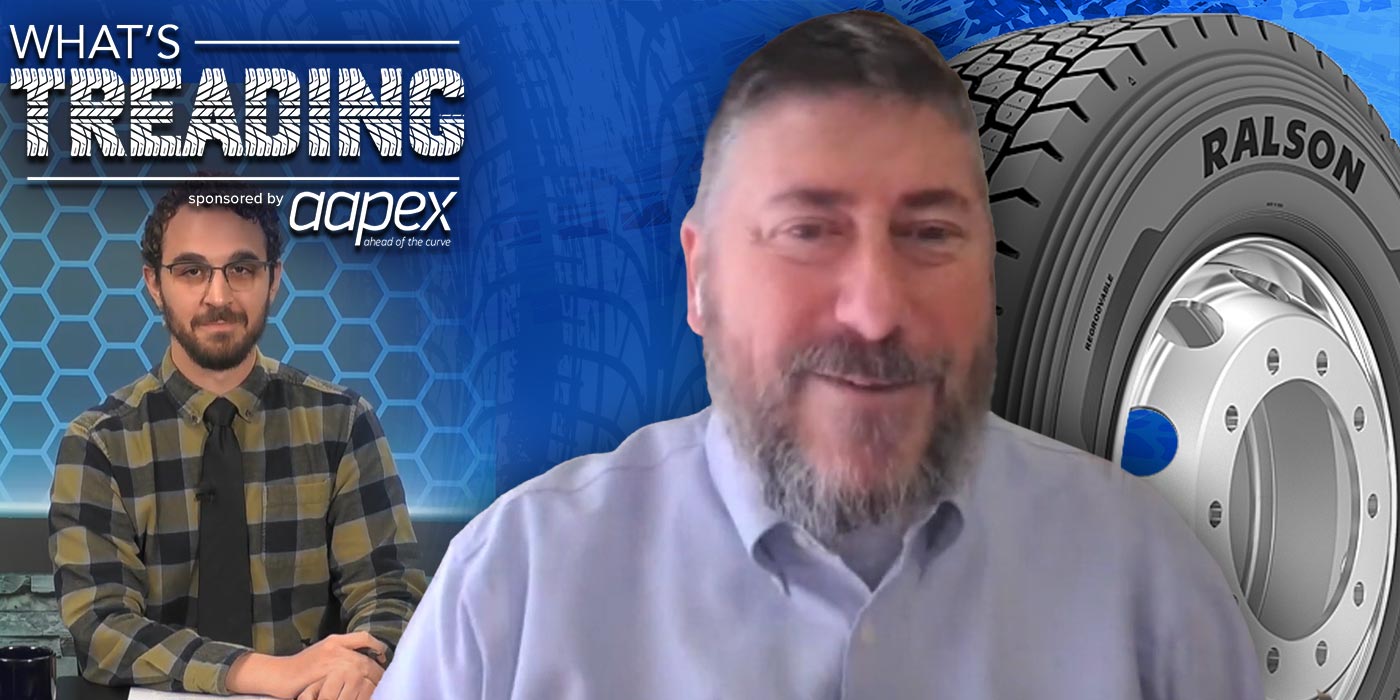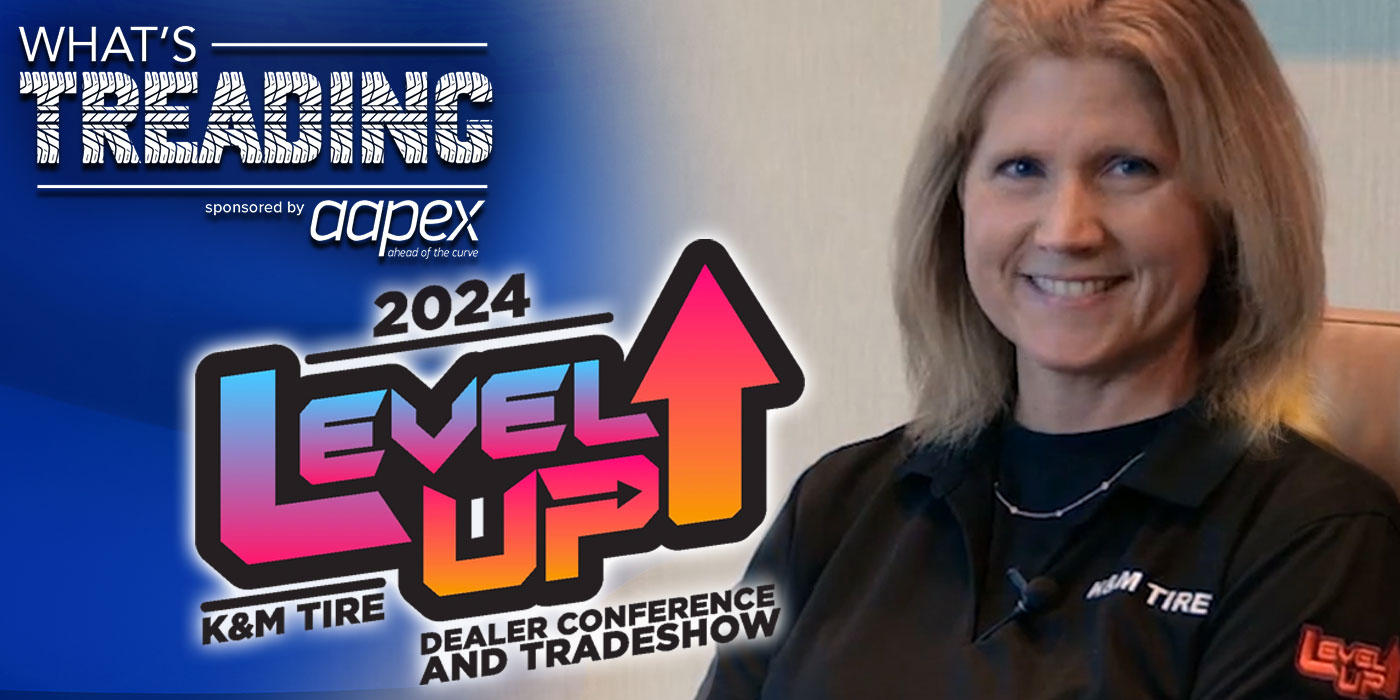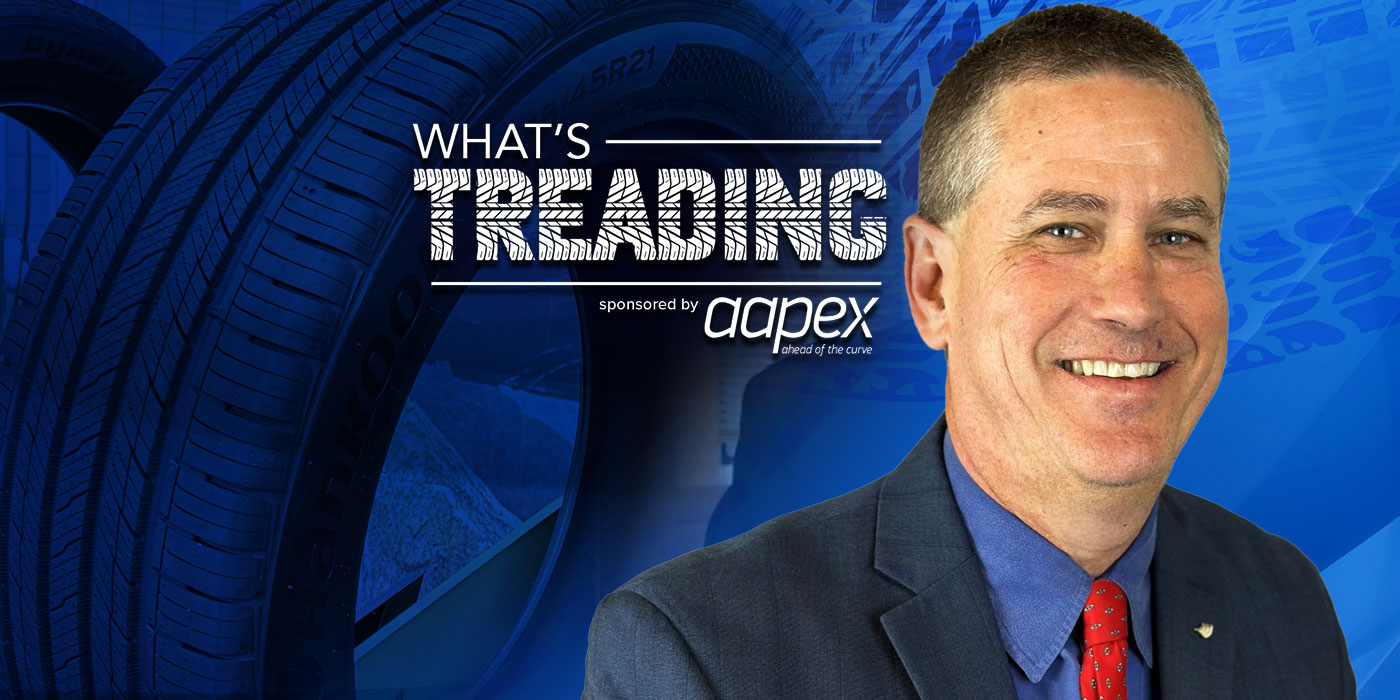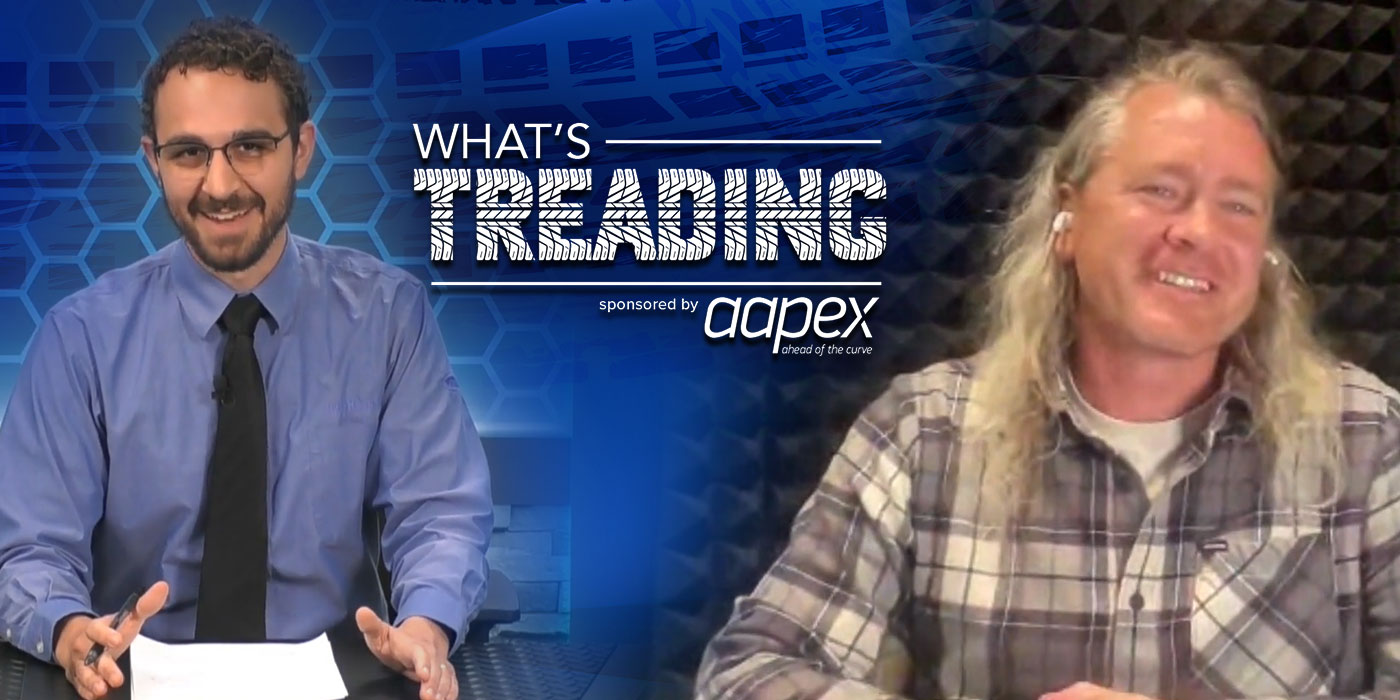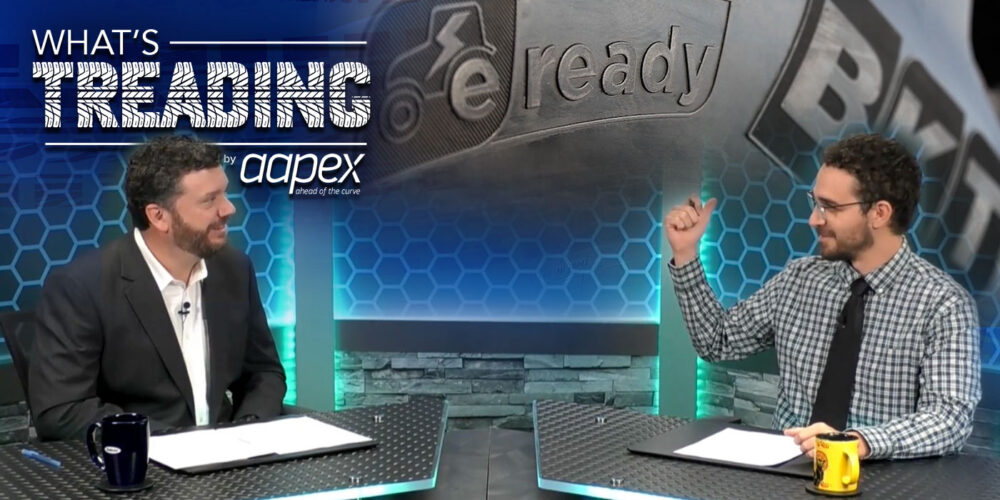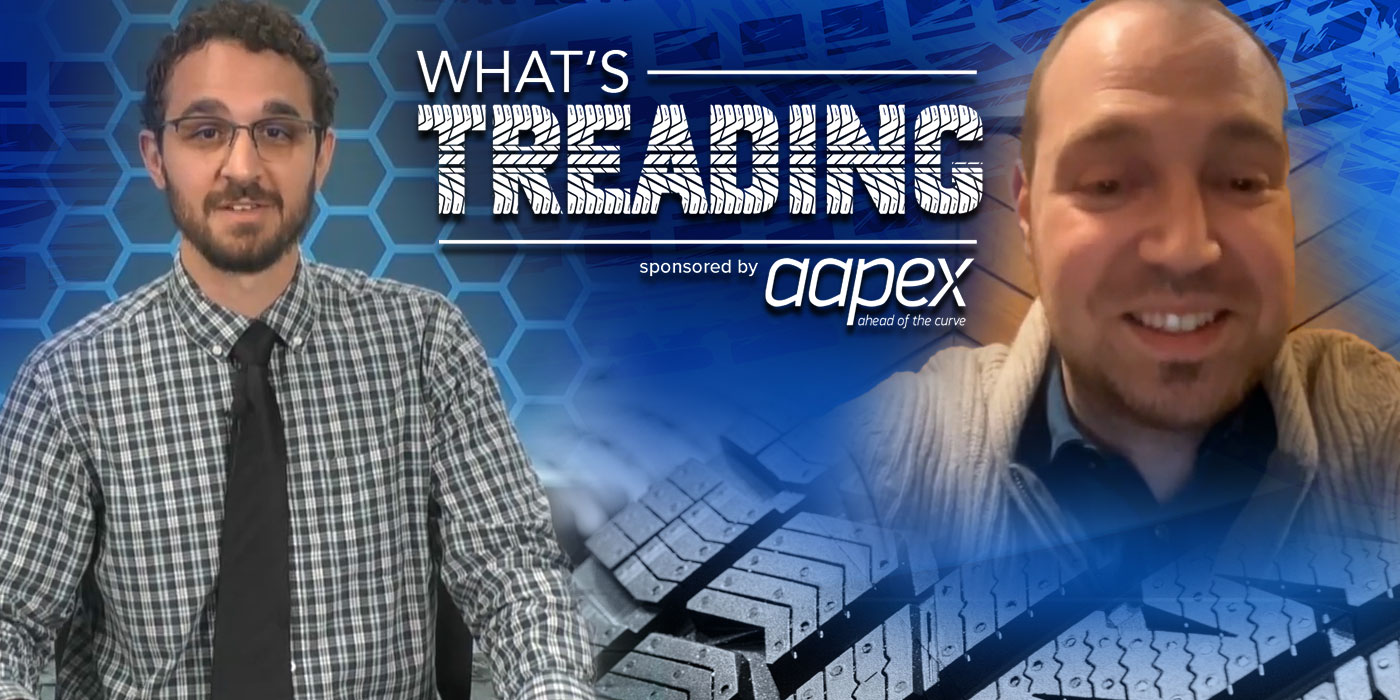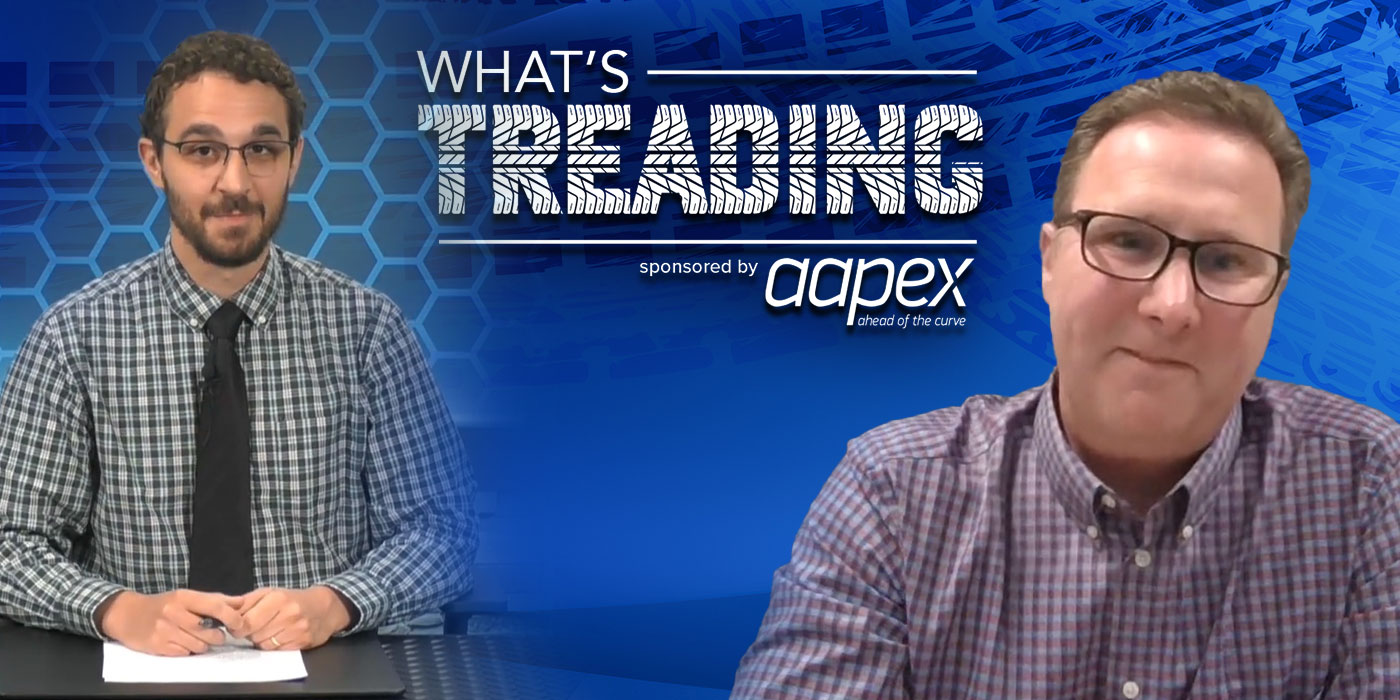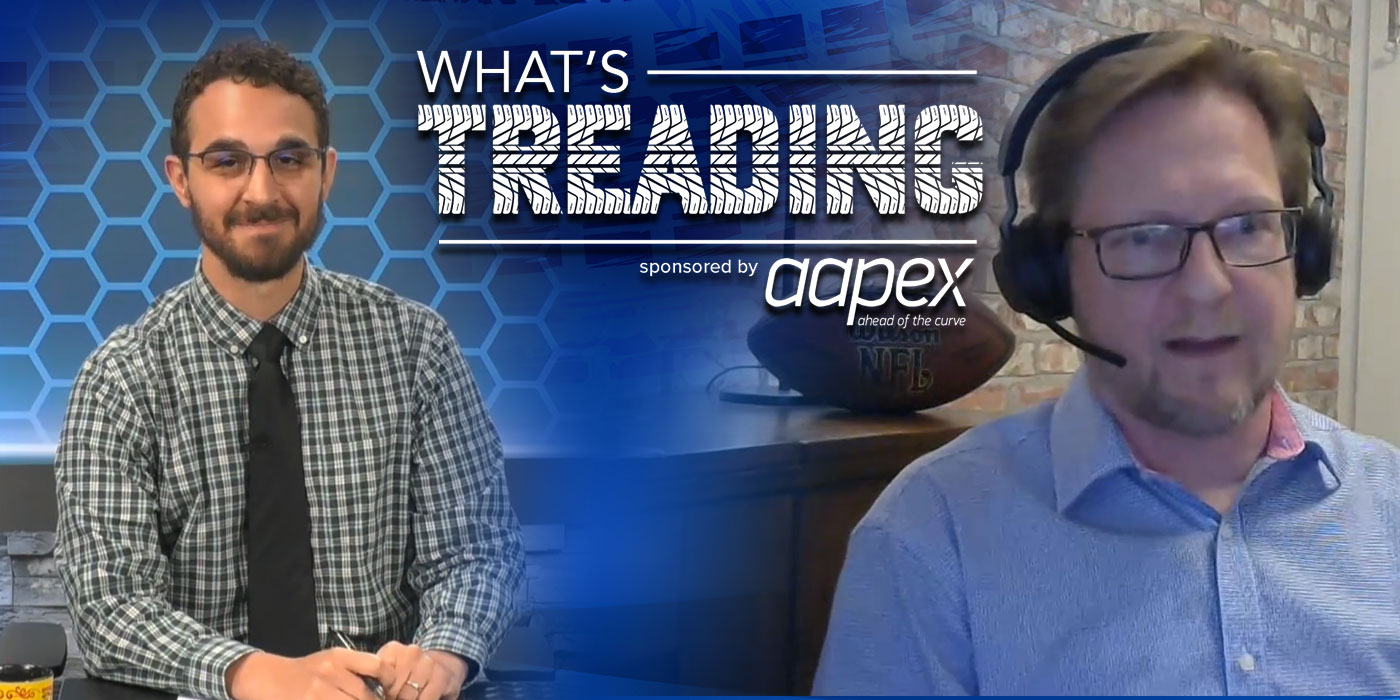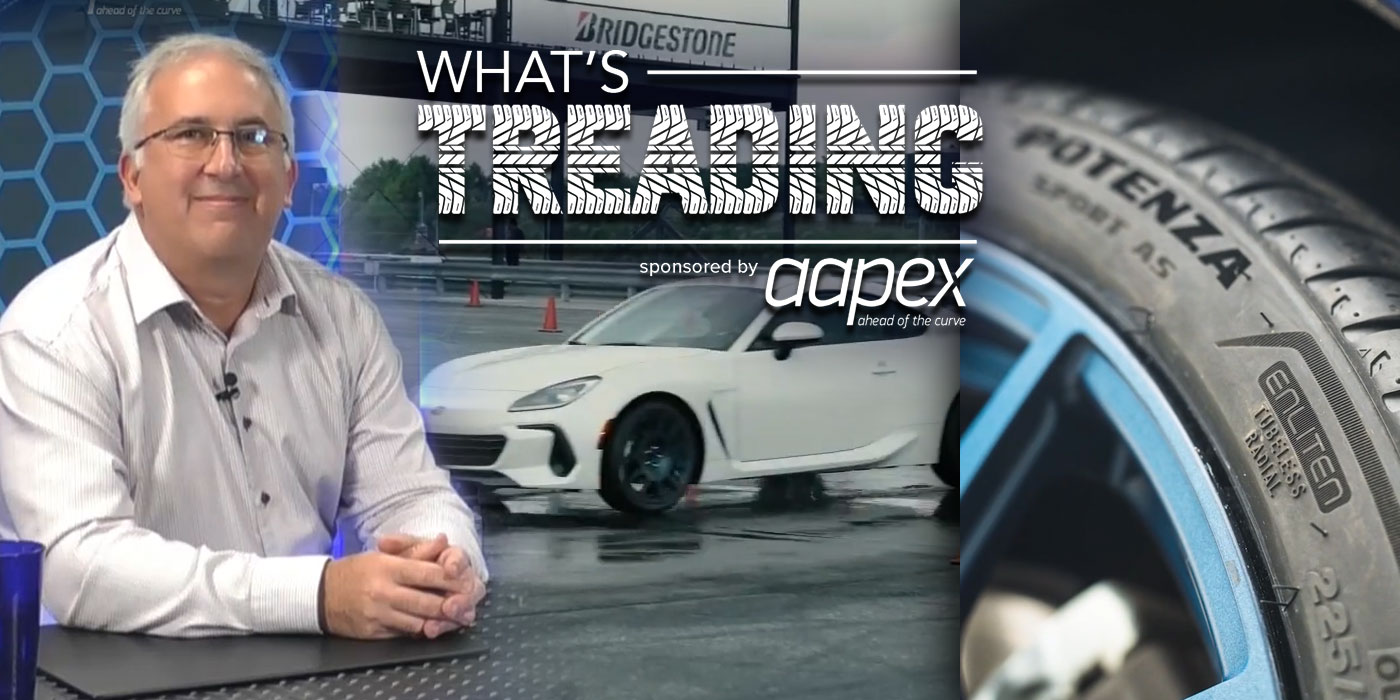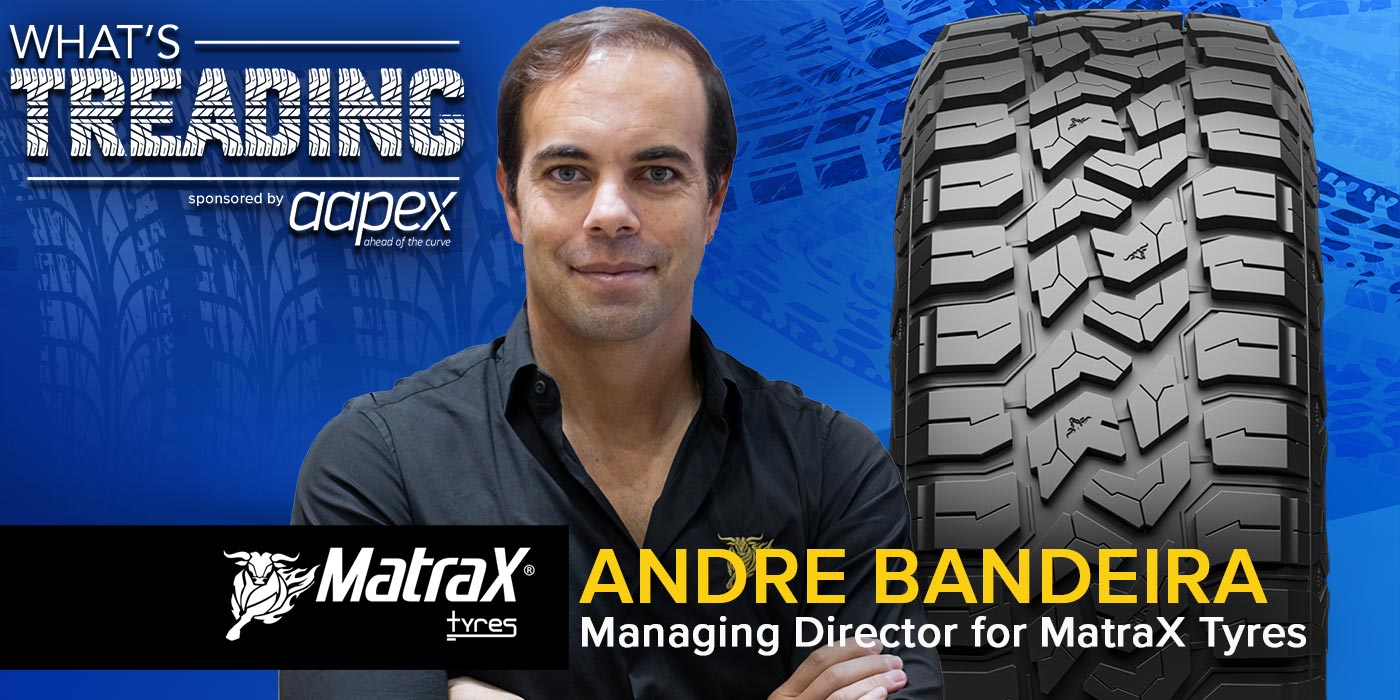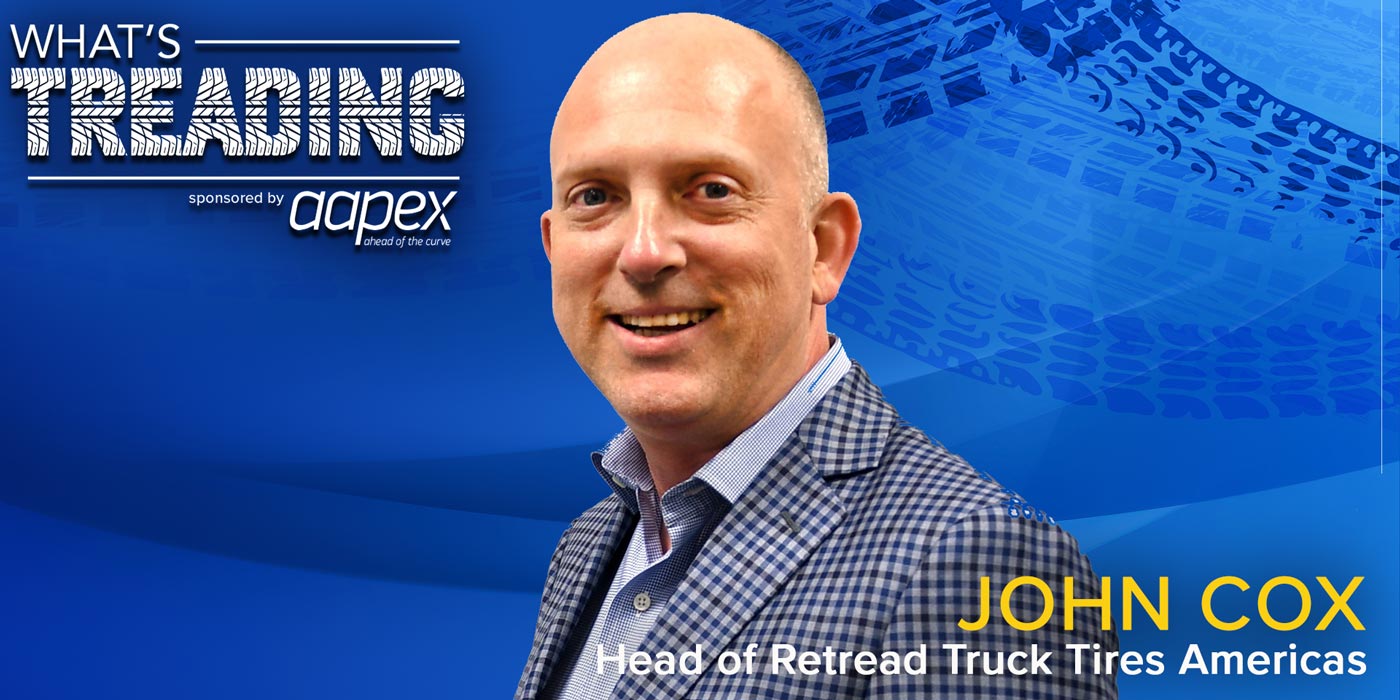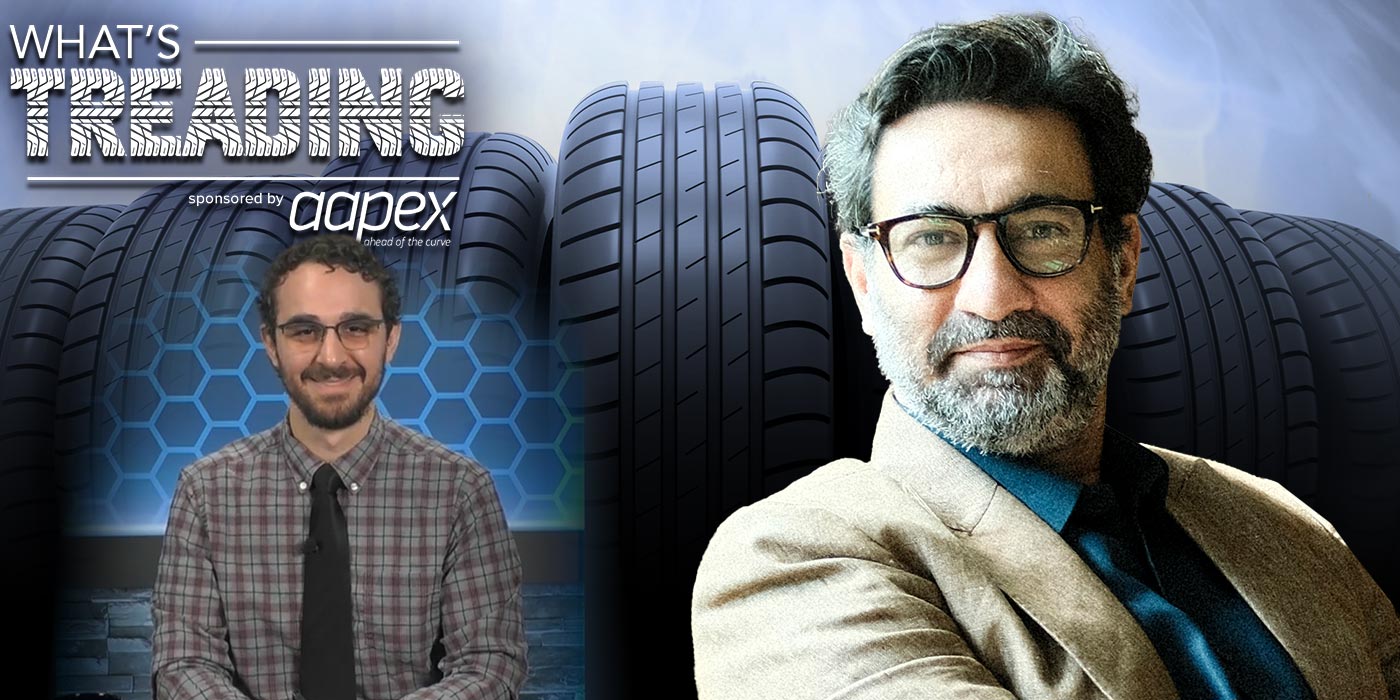When it comes to tire equipment, your mind can spin at the many options to choose from in each category. Each company makes a wheel balancer, tire changer, aligner or inspection equipment their own by adding certain features aimed at helping tire shops save time. One company in this space that specializes in wheel balancing has also pioneered technology on some of your favorite equipment at the shop, and that’s just a sliver of how it serves the transportation industry.
Founded in 1946 by Luigi Buzzi just outside of Milan, Italy, CEMB started as a leader in the wheel balancing space, and today operates three business units around solving balancing issues in its industrial, vibration analysis and automotive departments. In this episode of What’s Treading with Tire Review, presented by AAPEX, David Martin, COO for CEMB USA, describes how the company’s garage equipment division is bringing the latest technology in wheel balancing and wheel alignment to shops around the world.
David is a tire industry veteran having served in roles of increasing importance with Accu-turn, Hennessy Industries and American Tire Distributors to name a few. He has also been heavily involved in the tire industry, serving in various capacities with the Tire Industry Association, including as president from 2017 to 2018.
EPISODE OVERVIEW
- How David’s past roles with tire equipment companies influence his current role at CEMB (1:12)
- CEMB’s history, the structure of the business and how it works with other companies to bring out technologies on their branded equipment (2:57)
- The current expansion of CEMB’s Gainsville, Georgia, facility and how it will allow the company to grow in North America (7:56)
- Trends in tire changing and wheel balancing equipment David is seeing in the industry (11:05)
- CEMB’s touchless alignment system and how it has helped shops operate at a higher capacity (16:57)
- How CEMB plans to grow its presence in the US and beyond (20:03)
- Watch this episode above, on our YouTube channel or listen to it on Apple Podcasts, Spotify and Google Podcasts. Not a fan of watching the episode? Read the full interview below.
MW: Tell us about CEMB. I know some of our readers and listeners may not know the brand, and from what I understand, the company has been in the industry for a very long time. Is that correct?
David Martin, CEMB COO: CEMB is a very interesting company because it’s still privately held and the company is based out of Italy, about 45 minutes north of Milan. It began in 1946. There is a tremendous amount of history there. Currently, the company is run by Carlo Buzzi, who is the son of the founder, Luigi Buzzi. Luigi’s father founded the company, and there is a fourth-generation grandson, named Luigi Buzzi who is now also involved in the company There’s a very nice succession within the family and it’s privately held and doing very well globally and in the US.
MW: Now, CEMB also makes products and parts for other companies, correct?
DM: There is a little more to it than just that. Let me expand on it a bit. There are three divisions within the company. There’s a garage division, which is what I’m handling in the US, Canada, Mexico, Latin America, and we’re moving into Brazil. That is what’s managed out of the Gainesville, Georgia, location. There’s also an industrial and commercial division. Balancing is where the company was founded, so there’s technology being used by multiple manufacturers. We even build machines for private branding within the US market and around the world. It’s quite expansive. We serve the aerospace industry. We service a much broader spectrum of products than just automotive.
The thread that runs through it all is balancing – identifying vibrations and imbalances. And we as a company have been very fortunate at the garage division to leverage those other segments and divisions in what we do. So, we bring technology that they develop and have incorporated it into our products.
MW: I know in 2018, CEMB expanded its HQ in Gainesville, Georgia, which covers such an expansive area. There was a new training center, larger warehousing, and other things added. Can you give us an update on that and any plans for future expansion there?
DM: We’re in the process right now of receiving drawings and quotes on a building expansion. We’re considering several options with that. What we’re going to do is… create more warehouse receiving docks. We’re to a point where we filled up our space, and we need more space, which is a good problem to have. The company has garnered a lot of attention within the US market because – as I’ve told this to customers that have been to our Gainesville location– we’re the best-kept secret in the automotive industry. Once we go through our product lineup, our portfolio of products of balancing, wheel alignment and tire changers, they come away with a very different perspective of who we are and what we represent in the market.
We’re at capacity, and we need more space. We are adding team members to increase production capabilities. We are also growing our sales force and our rep agencies and service department. We’re growing all the way around. We’ve grown just this year. Inbound calls are up around 40%. Until we get our people trained, we’ve been a little bit pushed to be able to accommodate all that new business and all those inbound calls.
MW: So, circling back to the trends you’re seeing on the automotive side, what are you seeing in terms of tire changers, wheel balancers, alignment and any new technologies in these pieces of equipment that are coming out?
DM: We are growing our portfolio, and we’re always evolving as our competitors do. We have to keep up with the market and bring in new technologies and new ways of doing alignments, changing tires, etc. Changing tires has evolved tremendously for sure over the last 20 years. The difference today is the expense of the rims. They’ve changed the reverse mount, the drop centers, and they’re more difficult to navigate in getting the tire installed on the rim. So, there are a lot of challenges now that maybe weren’t there when you go back 30 years ago. Specifically, within the tire changer segment, we’ve got the helping arms. That’s an important piece because of the low profile tires with stiff side walls, and 19.5-in. assemblies, which are a difficult assembly to change. You need the bead assist devices that you see in our new product lines. And, we’re looking into more of the center post mounting tire changing products because that provides more protection for the expensive rims. There’s sturdiness and stability to that device that you can’t gain in some other products. Then, there are various products that can be added to the unit that helps facilitate changing tires in a better manner.
[With lower-profile tires], that increases the rigidity and stiffness of the sidewall and the whole assembly. Being able to install that on an expensive rim…because there’s never an inexpensive rim…you’ve got to be able to manipulate that tire bead around the rim. That’s where these new machines are filling that gap, that need in the industry.
MW: For sure. Anything along the line of wheel balancer trends that you can point to?
DM: Because of our balancing expertise, we’ve brought innovations to the market that we have let others bring out on their products. But not to talk about that so much, but to talk about what we’ve done with some of our technologies, we’ve gone with sonar and are leveraging it for one-plane balancing, which helps facilitate a quicker floor-to-floor process with being able to balance a tire more quickly in a dynamic mode. It’s a one-plane balance, and so you save wheel weights and it’s a faster process with the weight wheel weight savings. That’s something we’ve been able to innovate, as well as the laser placement of the wheel weight on the rim…the accuracy you need, and it’s required because vehicles are lighter. It’s easier to tell when something is not in balance than it used to be. So, today with the laser placement options that we offer throughout much of our product portfolio, we’ve been able to do that and provide that to the industry at a very effective cost point.
We also have diagnostic balancing where you can go in and use the machine to evaluate a damaged rim. If someone’s hit a curb and bent the rim, the electronics that we provide with our hub match system are top shelf. So, we have a lot to offer in our balancing portfolio because of our technological abilities.
MW: That’s great. The other thing I wanted ask you about that I’ve seen in CEMB promotional materials is the company’s touchless alignment inspection system. Can you explain that and how that works?
DM: We have a unit. It’s called Argos and it is touchless. If you put it on the rack and the unit needs to be aligned, you drive on and the camera systems are measuring it, the data feeds back to the computer and the aligner tells you it needs to be aligned. So, you can lift it and the cameras on the upper level can maintain the reference points and help the technician as he’s going through the alignment process live. It’s a real nice product. We had one gentleman in Virginia buy one and he used it for alignment checks.
Speed is important. We don’t hang our hat on it like some companies do, but we have the ability to quickly diagnose, whether it’s alignment or balancing, and then provide a finished product that the dealer can install and feel confident in the job and diagnostics. So, as I said, we are the best-kept secret in the automotive industry.
MW: There’s lots of exciting technology coming out from CEMB. So, we talked about earlier CEMB growing its North American HQ. How do you see CEMB growing its market share in the tire in wheel space this year and really in the future?
DM: Well, what we’re finding is that there are customers that may feel underserved in the market. So, we are filling a gap there. We also are finding that there’s distribution out there that is in need of a secondary product or that wants to move us to a featured product.
When I bring customers in and they see our portfolio of products, our training facility that you mentioned in Gainesville and they walk through it with our team – our service team provides training there as well as our sales team with sales training – with that opportunity, customers are gravitating to us. So, we’re doing something right. We can always evolve and get better, and that’s what we plan to do. Our focus is always on our customers, whether it’s the distributor or end user, that is the independent shop owner. We intend to give them the best service experience we can from what we offer.

